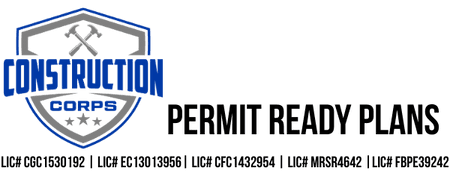Understanding Florida's Hurricane Season Building Regulations
Introduction to Florida's Hurricane Season Regulations
Florida is no stranger to hurricanes, with its coastal geography making it particularly vulnerable to these powerful storms. As a result, the state has implemented stringent building regulations to ensure safety and minimize damage. Understanding these regulations is crucial for anyone involved in construction or real estate in Florida.

The Importance of Building Codes
Building codes play a vital role in minimizing hurricane damage. They are designed to ensure that structures can withstand high winds, flying debris, and flooding. In Florida, these codes are continually updated based on the latest research and technology to enhance protection and safety.
Key Elements of Florida's Building Codes
Florida's building codes focus on several key areas:
- Wind Resistance: Structures must be able to withstand winds of up to 130 mph, depending on location.
- Impact Protection: Windows and doors need to be impact-resistant or have approved shutters.
- Flood Elevation: Buildings in flood-prone areas must be elevated above the base flood elevation.
Wind Resistance Standards
The ability of a building to resist wind forces is one of the most critical components of hurricane safety. Florida's regulations specify that the design and construction methods must account for regional wind speeds, ensuring that buildings can endure the intense pressures.

Materials and Techniques
To meet these standards, builders often use reinforced concrete, steel, and other robust materials. Techniques like hip roofs and continuous load paths help distribute wind forces evenly across a structure, reducing the risk of failure during a storm.
Impact Protection Measures
The threat of flying debris during a hurricane cannot be overstated. Florida's regulations require that windows and doors either be made of impact-resistant materials or be protected by approved shutters, significantly reducing the likelihood of damage.
Shutter Options
Homeowners can choose from various shutter systems, including accordion shutters, roll-down shutters, and storm panels. Each option offers different levels of convenience and protection, allowing property owners to select the best fit for their needs.

Flood Elevation Requirements
With many areas of Florida susceptible to flooding, elevation requirements are a critical part of the state’s building regulations. Homes in designated flood zones must be built above the base flood elevation to minimize water damage risk.
Impact on Insurance and Property Value
Meeting or exceeding flood elevation standards not only enhances safety but can also affect insurance premiums and property values. Elevated homes are typically seen as a lower risk by insurers, potentially leading to reduced costs for homeowners.
Conclusion
Navigating Florida's hurricane season building regulations is essential for construction professionals and property owners alike. By adhering to these standards, you can help ensure the safety and resilience of structures against the forces of nature. Investing in compliance not only protects lives but also preserves property value and reduces potential recovery costs.
